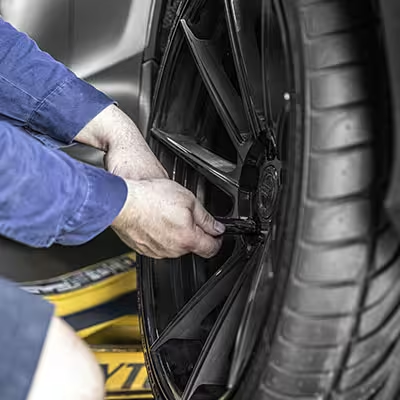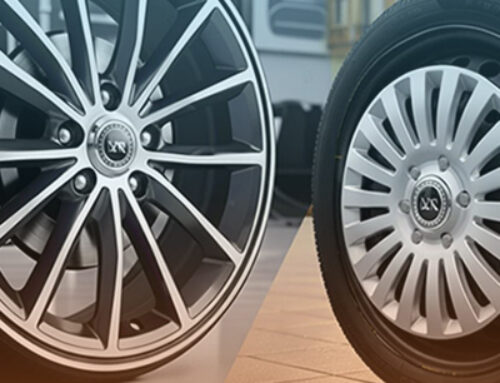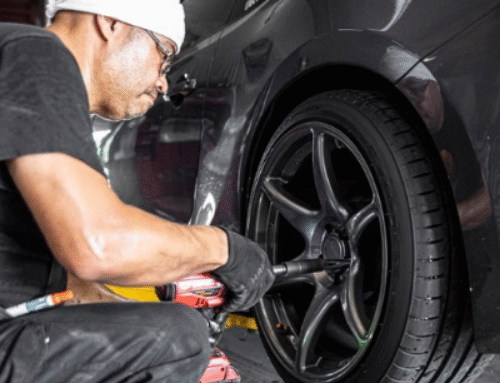How Can I Check if My Tires Are Properly Inflated?
Maintaining the right tire pressure is crucial for the safety, performance, and longevity of your vehicle. Properly inflated tires ensure optimal handling, fuel efficiency, and even tread wear. But how can you check if your tires are properly inflated? In this article, we will walk you through the steps to ensure your tires are at the right pressure, why it matters, and how often you should check them.
Why Proper Tire Inflation is Important
Before diving into the how-to, it’s important to understand why tire inflation matters. Underinflated or overinflated tires can lead to a host of problems:
- Reduced Fuel Efficiency: Underinflated tires cause more rolling resistance, forcing your engine to work harder, which consumes more fuel.
- Tire Wear: Tires that are not properly inflated wear unevenly. Underinflated tires wear out faster on the edges, while overinflated ones wear more in the center.
- Handling and Safety: Improper tire pressure can affect the way your vehicle handles. Overinflated tires may reduce traction, while underinflated tires can compromise steering and braking.
- Risk of Blowouts: Incorrectly inflated tires are more prone to blowouts, especially at high speeds.
Steps to Check if Your Tires Are Properly Inflated
Now that we understand the importance of correct tire pressure, let’s answer the question: How can I check if my tires are properly inflated?
1. Find the Recommended Tire Pressure
Each vehicle has a specific tire pressure requirement. You can usually find this information on the tire placard located on the driver’s side doorjamb, inside the glove box, or in the owner’s manual. The recommended pressure is measured in PSI (pounds per square inch) and can vary for the front and rear tires.
2. Use a Tire Pressure Gauge
To check your tire pressure, you’ll need a reliable tire pressure gauge. There are different types available, such as digital, dial, or pencil-style gauges. A digital gauge is often the easiest to read and use.
3. Check Tire Pressure When Tires are Cold
For the most accurate reading, check the tire pressure when your tires are cold—meaning the car hasn’t been driven for at least three hours or it has been driven less than a mile at low speed. Heat from driving can raise tire pressure, giving you an inaccurate reading.
4. Remove the Valve Cap
Unscrew the cap from the valve stem of the tire you’re checking. Be sure to store the cap in a safe place to avoid losing it.
5. Insert the Gauge
Place the tire pressure gauge onto the valve stem and press firmly. You should hear a brief hiss of air. Hold the gauge in place until you get a reading.
6. Compare the Reading to the Recommended Pressure
Compare the gauge’s reading with the recommended PSI. If your tire’s pressure is lower than the recommended PSI, you’ll need to inflate it. If it’s higher, you’ll need to release some air.
7. Adjust the Pressure
- To Inflate: Use an air compressor, available at most gas stations or for purchase for home use. Attach the air hose to the valve stem and inflate to the recommended PSI.
- To Deflate: Press down on the center of the valve stem with a small tool (such as a key) to release air until the pressure matches the recommended level.
8. Check All Four Tires
Repeat the process for all tires, including the spare tire, if you have one. Keeping the spare tire properly inflated ensures it’s ready if you ever need it.
How Often Should You Check Tire Pressure?
It’s a good idea to check your tire pressure at least once a month, and before long road trips. Sudden temperature changes can also affect tire pressure, so be extra diligent during seasonal transitions.
Warning Signs of Improper Tire Inflation
Here are some signs that may indicate your tires are not properly inflated:
- Uneven Tire Wear: If the center or edges of your tires are wearing faster than the rest, your tires might be overinflated or underinflated.
- Low Fuel Economy: If you’re visiting the gas station more frequently, underinflated tires might be the culprit.
- Vibration While Driving: Excessive vibration could signal tire imbalance or uneven wear caused by improper inflation.
- Tire Pressure Monitoring System (TPMS): If your vehicle is equipped with a TPMS, an indicator light on your dashboard will alert you if tire pressure is too low.
So, how can I check if my tires are properly inflated? With the right tools and a few simple steps, it’s easy to ensure your tires are at the correct pressure. Regularly checking your tire pressure not only improves your vehicle’s safety and performance but also extends the life of your tires. Be proactive with tire maintenance to avoid costly repairs and ensure a smooth ride. If you have any doubts or questions, feel free to consult a professional or visit your local tire service center.






